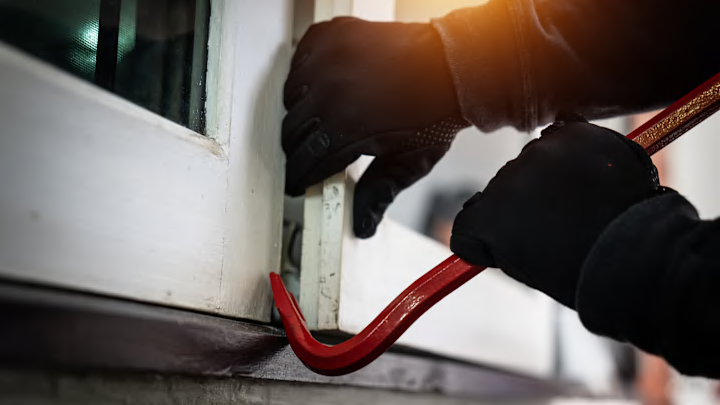Burglars in cartoons have a few things in common. They wear masks, they usually dress in black, and they’re normally sporting a crowbar. The prying tool is not inherently for criminals, but it does communicate a willingness to rip something—like, say, a doorjamb or window frame—apart.
But why is it called a “crowbar”? Does it have anything to do with crows? And is it different from a prybar?
The Origin of Crowbar
The Oxford English Dictionary, considered a primary authority on linguistics, has precious little to say on the etymology of crowbar. But it does offer that this type of prybar was once known simply as a crow.
The OED cites such use back to the 15th century, defining it as a “bar of iron usually with one end slightly bent and sharpened to a beak, used as a lever or prise.” Later, in the 16th century, gardening tools, grappling hooks, and door-knockers were all variously known as crows.
It’s unknown why or when crow became crowbar, though it’s possible that as language evolved, there became a need to differentiate between the bird and the tool, or between the various tools known as a crow. The OED dates the first printed use of the term to 1748, when documentation of the colonial history of New Jersey noted that “men, armed with clubs, axes, and crow bars [sic], came, in a riotous and tumultuous manner.”
Whether crow and crowbar were actually named after the bird is hard to substantiate. Some have theorized that because the crowbar has one end that resembles a crow’s beak or foot that it must have been named after the bird.
“It is from the fancied resemblance of the bent and flattened point of the instrument to the bill of a crow, that it is called a crow-bar,” wrote one Buffalo News columnist in 1934. (The word was sometimes hyphenated, though that fell out of practice.)
Though not definitive, it’s become largely accepted wisdom. Most people writing into newspapers in the pre-internet era asking for the origins of the word got the same explanation.
Crowbar as a Racist Term |
|---|
While the origins of crowbar are somewhat murky, there’s no truth to the idea it was ever a racist term. The word crow has been used as a slur for Black people, but that started in the 1700s, centuries after crowbar first took hold. There’s no evidence crowbar refers to any racist language. |
Crowbar vs. Prybar vs. Wrecking Bar
Crowbar and prybar are not exactly interchangeable, though some people might use the terms indiscriminately. Nor is there any official tool industry standard.
In general, though, crowbars are often on the heavier side, with one rounded or curved neck. A prybar is often smaller and thinner, with a 90-degree neck. Crowbars are often used for demolition—tearing, ripping, and displacement. Prybars might be for jobs that call for a little more care or caution. You might use a prybar to remove a nail or open a crate; you’d use a crowbar to tear up your kitchen cabinets for replacement.
A wrecking bar is a remarkably similar tool, though some people may reserve the term for a bar that has a more prominent hook on the end.
